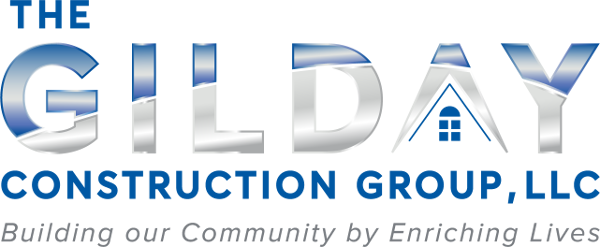Your roof is one of the most critical components of your home, serving as your first line of defense against the elements and safeguarding the well-being of you and your loved ones. It not only shields you and your loved ones from the elements but also plays a vital role in maintaining the structural integrity of your house. However, despite its robust and protective nature, roofs are not impervious to the passage of time and the rigors of weather, making them susceptible to the gradual wear and tear that can afflict any structure.
The financial implications of such neglect can be substantial, often involving hefty expenses that could have been mitigated or entirely prevented with diligent care and attention. Neglecting your roof can lead to costly repairs or even a premature replacement. To ensure your roof stays in optimal condition and avoid expensive repairs, follow these steps and best practices:
Regular Roof Inspections
Prevention is the key to avoiding expensive roof repairs. Start by conducting regular roof inspections, ideally twice a year – in the spring and fall. During these inspections, look for signs of damage or wear, such as:
- Missing or damaged shingles
- Cracked or curling shingles
- Loose or deteriorated flashing around vents, chimneys, and skylights
- Accumulation of debris in valleys or gutters
- Water stains on your ceiling or walls
Addressing these issues early can prevent them from escalating into more extensive damage.
Clear Debris and Clean Gutters
Leaves, branches, and other debris can accumulate on your roof, especially in the fall. This debris can trap moisture, accelerate roof deterioration, and even cause water to seep into your home. Regularly clear debris from your roof to prevent such problems.
Equally important is keeping your gutters clean and free-flowing. Clogged gutters can lead to water backing up under your roofing materials, causing rot and leaks. Clean your gutters at least twice a year, or more often if you have many trees around your property.
Trim Overhanging Branches
Overhanging tree branches can be a significant threat to your roof. During storms or heavy winds, these branches can scrape, puncture, or fall onto your roof, causing severe damage. Trim back any branches that are within a reasonable distance of your roof to reduce this risk.
Maintain Proper Attic Ventilation
Proper attic ventilation is crucial for preventing roof damage. Inadequate ventilation can lead to moisture buildup in your attic, which can cause your roofing materials to deteriorate prematurely. Ensure that your attic has proper ventilation, including soffit and ridge vents, to allow for adequate air circulation.

Check for Ice Dams in Winter
In regions with cold winters, ice dams can be a significant concern. Ice dams form when warm air from your home rises to your attic and melts snow on the roof. The melted snow then refreezes at the roof’s edge, creating a barrier. This can lead to water seeping under your shingles and causing damage. To prevent ice dams:
- Ensure your attic is well-insulated to minimize heat transfer.
- Seal any gaps or leaks in your attic.
- Install heated cables or use roof rakes to remove snow from your roof’s edge.
Address Leaks Promptly
If you notice a water stain on your ceiling or walls or suspect a leak, don’t wait to take action. Address leaks promptly by identifying the source of the leak and repairing it immediately. Delaying repairs can lead to more extensive water damage and mold growth.
Hire a Professional for Roof Maintenance
While you can perform some roof maintenance tasks yourself, it’s essential to hire a professional roofer for periodic inspections and more complex repairs. Roofers have the expertise to identify hidden issues and address them before they become major problems.
Choose High-Quality Roofing Materials
When it comes time to replace your roof, invest in high-quality roofing materials. While they may have a higher upfront cost, they can extend the lifespan of your roof and reduce the frequency of repairs. Work with a reputable roofing contractor to select the right materials for your climate and budget.
Understand Your Insurance Coverage
Familiarize yourself with your homeowner’s insurance policy, particularly the coverage related to roof repairs and replacements. Knowing what is covered and what is not can help you make informed decisions when it comes to repairs and avoid unexpected expenses.
Plan for Roof Replacement When Necessary
Despite your best efforts, there will come a time when your roof needs replacement. Plan for roof replacement when your current roof reaches the end of its lifespan or when repairs are no longer cost-effective. A well-timed replacement can save you money in the long run by preventing extensive damage to your home’s interior.
In conclusion, protecting your roof and avoiding expensive repairs requires proactive maintenance and a commitment to addressing issues promptly. Regular inspections, maintenance, and timely repairs can extend the lifespan of your roof, protect your home’s structural integrity, and save you from the financial burden of unexpected expenses. By following these steps and best practices, you can extend the life of your roof, maintain the integrity of your home, and save money on costly repairs in the future. Remember that investing in the care and maintenance of your roof is an investment in the long-term health and value of your home.
At Gilday Construction, we understand the importance of a well-maintained roof. Our team of experienced professionals specializes in roof repair and maintenance. Don’t wait until roof issues escalate; contact us today to schedule an inspection and take the first step towards a secure and durable roofing system for your home. Your roof is our priority, and we are here to assist you every step of the way.

